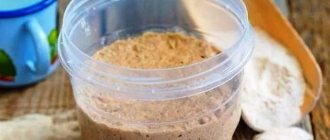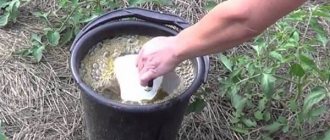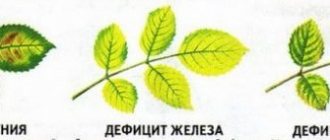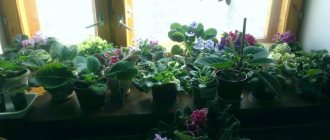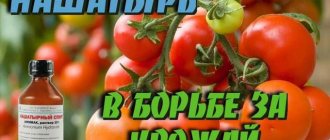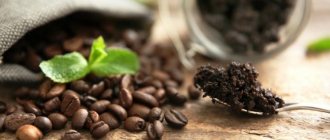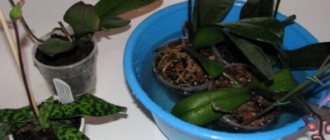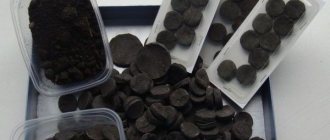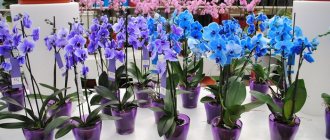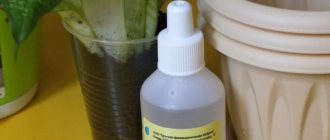Category: For flowers and indoor plants Reading time: 8 min · Views: 9,285
Iodine is contained in all protein organisms as an element necessary for metabolic processes. However, this substance also has a positive effect on plants. Gardeners have long appreciated the effect of using iodine water when growing and caring for seedlings, having accumulated a wealth of experience in using this solution. Iodine for indoor plants as a fertilizer ensures not only growth, but also lush flowering.
What are the benefits of iodine for plants?
Iodine deficiency is recognized as a dangerous environmental phenomenon. This is due to the process of evolution of our planet: once upon a time, the entire supply of iodine from the soil was washed away along with the meltwater of glaciers, rain and snow into the ocean.
Iodine compounds, together with drops of sea water, enter the atmosphere and return back to the earth, but this process is very slow and ensures the return of a tiny amount of the microelement. Therefore, the further the region is from the ocean, the greater the iodine deficiency in the soil.
Back in the middle of the last century, it was believed that iodine was not important for the growth and development of plants. Scientists were confident that plants meet their needs for microelements by obtaining them from the atmosphere.
The opinion changed after a comprehensive study of the effect of iodine in plants by domestic scientists. They found that iodine is contained in the structure of plant cells and takes an active part in photosynthesis, respiration and metabolism.
This means that after feeding with a microelement a number of positive changes occur in the plant:
- roots develop well;
- the growth and development of green mass is enhanced;
- flowering and fruit set are stimulated;
- immunity to infections increases;
- resistance to drought and cold increases.
As a result, fruiting is prolonged and the amount of harvest increases. Fruits accumulate more sugars and vitamins.
It is impossible to determine that a plant lacks iodine by its appearance. Microelement deficiency is manifested by reactions characteristic of many disorders: the plant develops poorly, often gets sick, blooms poorly and sets fruit.
Iodine deficiency is typical for soil with a high content of chlorine or calcium. That is, it occurs after liming garden soil and applying chlorine-containing fertilizers. Regardless of the type of soil, fertilizing plants with microelements is necessary, especially in regions remote from the ocean.
Some complex fertilizers contain iodine. When using such fertilizers, additional fertilizing with microelements is not necessary.
Microelement properties
The substance is widely used in vegetable growing and horticulture as a fertilizer. It promotes the production of useful amino acids, ensures normal metabolism within the plant organism, and is responsible for the process of cellular respiration.
Iodine is useful for plants because it:
- fights infections and parasites;
- strengthens the immunity of seedlings;
- disinfects the soil;
- saturates plant cells with vitamin C;
- participates in nitrogen synthesis;
- eliminates pathogenic microorganisms.
Among the main advantages of iodine-based fertilizer are accessibility and effectiveness.
This type of fertilizer can be purchased at any pharmacy. The product is safe and does not have any negative effects.
Iodine for seeds
The use of iodine helps seeds germinate better, the root system of young plants forms and develops more actively, their resistance to adverse environmental factors increases, and immunity is strengthened.
To prepare seed material for planting, it must be placed in a special composition. To create it at home, you need to dissolve one drop of the pharmaceutical preparation in 1 liter of water. The seeds are placed in liquid, left in it for 6 hours, then planted in prepared soil.
Application of iodine for seedlings
Vegetable seedlings are processed using the root method. To prepare the nutritional composition, dilute 1 drop of iodine in 3 liters of liquid (for healthy specimens, one feeding is sufficient).
Features of use
Gardeners and gardeners widely practice the use of iodine as fertilizer and plant nutrition. This microelement has proven itself well. Medical iodine is used as a fertilizer for plants; thanks to its antiseptic properties, it improves the process of nitrogen exchange in the soil, kills bacteria, fights rot, and, therefore:
- the taste, color, color, size of the fruit improves;
- productivity increases;
- Vitamin C content increases in some crops.
For vegetable crops
In order for garden plants to grow and bear fruit well, and for vegetables to be tasty and healthy, seedlings also need to be periodically supported with iodine supplements.
Cabbage
Feeding is carried out for the purpose of:
- Soil disinfection. The solution is prepared from 2.5 ml of iodine and 10 liters of water. The area is processed before planting seedlings.
- Seed preparation: seeds are kept in an iodine solution for 2-3 hours.
- Prevention of infectious diseases. A mixture is made of 40 drops of iodine, 1 spoon of peroxide, a liter of whey and 40 liters of water. The beds are processed every 10 days.
Cabbage is fed during the formation of the first leaves and during the setting of a head of cabbage. If signs of vegetable damage by aphids or gray mold appear, it is advisable to foliarly spray the seedlings with an iodine solution (five drops).
cucumbers
To fertilize the vegetable crop in question, it is recommended to use regular iodine fertilizer. You can add milk to the composition: 30 drops of the pharmaceutical preparation are dissolved in 1 liter of natural product. Fertilizing is applied once every fourteen days.
Young plants are treated against root rot 3-4 times, lubricating diseased stems with iodine solution.
Tomatoes and eggplants
The first fertilizing of crops with microelements is carried out during the bud formation phase. To do this, dissolve 20 drops of iodine and 500 ml of whey in 5 liters of water. Plants are sprayed with the solution until completely wet.
The second and third feeding is carried out in the middle of the flowering phase and during fruiting. Add ½ tsp to the nutrient solution described above. boric acid, having previously dissolved it in hot water. Boron enhances flowering and prevents the ovaries of plants from falling off.
bell pepper
First, the seeds are treated (a drop of alcohol tincture in a cup of water). When the first leaves appear on the seedlings, the soil is treated with a solution based on a mixture of a drop of iodine in three liters of settled water.
The next feeding is carried out when the pepper has taken root well in the open ground. The “medicine” is made using three drops of tincture in a bucket of water. One liter of solution is required for one pepper. After feeding, the pepper quickly sets fruit, does not get sick and produces a good harvest. To protect against late blight, I spray the leaves and stems.
Grape
This crop may suffer from fungal diseases. To spray grapes, make a medicinal product based on milk (liter) and iodine (20-22 drops). The leaves are thoroughly sprayed with this mixture. The procedure is carried out three times a month. If the plant is sick, the time period is increased.
For strawberries
In order to prevent diseases and increase productivity in the spring, strawberry beds are treated with medicinal compounds that include iodine. The most commonly used solution is 10 drops of iodine in 10 liters of water. Processing strawberries requires care. When spraying plants, they try to prevent the composition from getting on the central bud, which is located on the surface of the soil. The same solution can be used to spill the soil around the roots of plants.
How to prepare an iodine solution for feeding
It is best not to experiment with your green pets, but to carry out disease prevention in a timely manner. Iodine will become an indispensable assistant for caring for plants. This element actively takes part in synthesis and has antiseptic and antifungal properties. The solution can be prepared at home or purchased special preparations from the store.
When preparing the solution, the proportions must be strictly observed, otherwise serious damage to the plantings can be caused. For plants, the ideal iodine ratio is 0.1 mg per 1 kg. If these indicators are exceeded, the beneficial fertilizer will become a real poison for green pets, capable of destroying the flower. In the best case, if there is an overabundance, the plant will grow too abundantly, and the flowers will be unsightly yellow.
How to use iodine so as not to harm the plant? To prepare the fertilizer, you will need 7 liters of water and 20 ml of iodine. The liquid needs to be mixed and watered over the walls of the pot. This solution stimulates growth and protects against powdery mildew. You can cure indoor flowers affected by late blight by adding hydrogen peroxide to the mixture.
If the plantings do not bloom for a long time, a mixture of one liter of water and 1 drop of iodine will help. It must be poured with extreme caution so that the solution penetrates only into the soil without touching the leaves and roots, otherwise the mixture may burn them.
General rules of use
- Iodine is not used during plant dormancy.
- A pharmaceutical alcohol solution of iodine (5%) is used in microdoses. As a rule, only 1-2 drops are used per 2 liters of water. If you increase the concentration, you can burn the plants and destroy beneficial soil bacteria.
- Seedlings and seedlings are watered with iodine solution only after the plants have taken root in a new place and become stronger.
- Fertilizer should not fall on the root collar of the plant. And before you spill the soil with iodine solution (preferably warm!), the soil must be thoroughly moistened.
- To increase efficiency, it is recommended to add wood ash to the fertilizer at the rate of 1 part ash per 10 parts iodine solution.
- When foliar feeding, it is best to spray the iodine solution through a fine sprayer. From the resulting “fog,” the element is absorbed better by plants – by 65-90%.
Ready-made fertilizers with iodine
You can also buy a solution with iodine in the store. These preparations are used to treat the wounds of a green pet and also prevent yellowing of the leaves. This contributes to the speedy recovery of the flower and the abundant appearance of foliage in bright colors.
The most popular drug among flower growers is “Bioiodis”. It consists of environmentally friendly products and is not capable of harming the plant when used correctly. In addition to iodine, it contains vermicompost and other useful microelements.
To avoid overdose, you should strictly follow the instructions on the drug. “Bioiodis” is used to spray leaves and apply fertilizer directly to the soil. To get the life-giving mixture deep into the soil near the rhizome, you can use an ordinary syringe. Pre-soaking in Bioiodis before planting in a pot is also beneficial for plants.
The use of iodine against pests
Garden insects are also afraid of Yoda. To destroy cockchafer larvae in spring and autumn, all perennial plants are watered at the root (not on the leaves) with an iodine solution (15 drops per 10 liters of water). Approximately 1 liter is used for each bush. If there are too many pests, then up to 5 liters of this product can be poured under an adult plant.
Against weevils, in early spring the soil is spilled directly over the snow with an iodine solution (1 tsp of iodine per 10 liters of water). And to combat aphids, plants are sprayed with 10% Farmayod.
Tips for gardeners
An indispensable assistant for gardeners is iodine. Thanks to its antiseptic properties, it perfectly plays the role of an effective fertilizer, safe and beneficial for the earth. A distinctive feature is its excellent immunostimulating effect. After using iodine solution in vegetable beds and flower beds, there is not only an increase in yield and improvement of green mass, but an increase in the shelf life of fruits.
Spring iodine fertilizing can benefit absolutely all plants. However, seedlings planted in open ground may not tolerate such a powerful fertilizer immediately after transplantation. Seedlings require an adaptation period. Only mature seedlings should be fertilized. However, an aqueous solution of a pharmaceutical substance can be used immediately before planting: 2-3 days before transplanting, the soil is spilled, due to which the land area undergoes a disinfection process.
Another important tip is to apply fertilizer based on iodine solution for plants only after thoroughly moistening the soil.
During the dormant period of the plant, such fertilizing is excluded, otherwise the root system may burn.
The mechanisms of the effect of iodine solution on the processes of growth, development, flowering and fruiting have not yet been fully studied. Assumptions are made, and they are based on the likelihood of the substance’s participation in coordinating the work of enzyme systems. Whether this is true or just an assumption is difficult to judge. But we can say with confidence that iodine supplementation is beneficial for both home and garden plants.
Application for house plants
Good care is undoubtedly important for indoor flowers. After all, only in this case will you get a beautiful and healthy plant that will delight you with inflorescences . Iodine as a fertilizer is also suitable for indoor plants, it:
- will prevent the appearance of rot in the soil and fungi;
- stimulates crop growth;
- strengthens the immune system.
You need to water according to the following schedule: 3-4 times every 10 days. The dosage is 2 drops of 5% iodine per 2 liters of water.
You can prepare a mixture of iodine and peroxide. Both substances are taken in equal proportions, and 100 times more water. The solution should be poured over the walls of the pot, very carefully, slowly, so as not to get on the root part. Let's look at fertilizing with iodine using the most popular plants as an example:
- Violet.
Fertilizing indoor violets with iodine
The most popular among flower lovers, but very capricious, is the violet. She immediately feels a lack of nutrients, unfavorable temperature, air. It reacts to this very sharply - first the leaves die, and then the plant itself dies. This means that it needs to be fed with useful substances. For this, a weak iodine solution is used. It is prepared like this: take 1 drop of 5% iodine and add it to 3 liters of boiled, cooled water. Flowers are watered as usual every 10 days.
2. Geranium.
Geranium blooms are dense, bright and memorable. But it happens that the plant suddenly begins to wither, drops flowers, or does not show activity for a long time. This may be due to:
- lack of moisture;
- poor lighting or, conversely, too much lighting;
- improper use of fertilizers;
- lack of nutrients.
This flower really likes feeding with iodine; after it, flowering increases, the color of the inflorescences becomes brighter. Calculation of preparing a solution for geranium: 3 drops of iodine per 1 liter of rainwater . The plant is watered with this solution at intervals of 10 days.
Use for fruit trees
Fruit trees are constantly attacked by aphids; they need feeding with iodine. Treatment against aphids is carried out with the same solution as for tomatoes, and trees are treated every 10 days.
The solution will help control pests and diseases of fruit trees and shrubs. Iodine is not only a remedy in the first aid kit, but also an excellent helper for plants. When using prepared solutions, strictly adhere to the recipes and doses, then your crops will be healthy, blooming and beautiful.
What is its safety?
The toxicity and safety of iodine are rather relative concepts. Indeed, if dosages are not observed, the product exhibits properties that are toxic to living organisms. If it enters the digestive tract, the drug has a toxic effect . In this case, the cardiovascular and genitourinary systems suffer. In some cases, death is possible.
When spraying plants with a working solution, you need to wear glasses to protect your eyes. All exposed areas of the body are protected by work or protective clothing. If all precautions are taken correctly, iodine solution is safe.
Application in the garden
This chemical element:
- It perfectly performs the function of fertilizer, and at the same time is completely safe for the soil.
- It does an excellent job of disinfecting the soil and destroys a lot of pathogenic bacteria and fungi on plants (it’s an antiseptic, after all!)
- Increases the survival rate of seedlings and seed germination.
- Causes a sharp “explosion” in the immune system of already growing vegetables and flowers, which contributes to their self-healing and increased yield.
- Fruits obtained with the participation of an iodine solution are themselves saturated with iodine (which is very useful for humans), and this also increases their shelf life during long-term storage.
Iodine as a fertilizer is useful for all plants, especially in the spring, but do not rush to pour the drug on everything. Freshly transplanted plants can get sick from such stimulation; they need to get used to the new soil and adapt. All you can do for such a sprout is to disinfect the soil with an iodine solution before planting, 2-3 days before.
Plant crops cannot be fertilized dry, and this applies not only to iodine. Only damp, well-watered soil. And, of course, you will not introduce this element during the dormant period; your task is not to burn the roots of green plantings, or the plantings themselves.
Feeding seedlings after planting in spring
When planting a rose seedling, the hole is filled with fertilizers according to the following scheme:
- humus or rotted manure 5 kg;
- wood ash 1 cup;
- complex mineral fertilizer 2 tbsp. spoons.
All components are mixed with soil, and a rose is planted in this mixture. This amount of nutrients is enough for the development of the plant until next spring. Additionally, the rose is not fed.
In spring, the feeding scheme for young roses is no different from fertilizing adult bushes.
